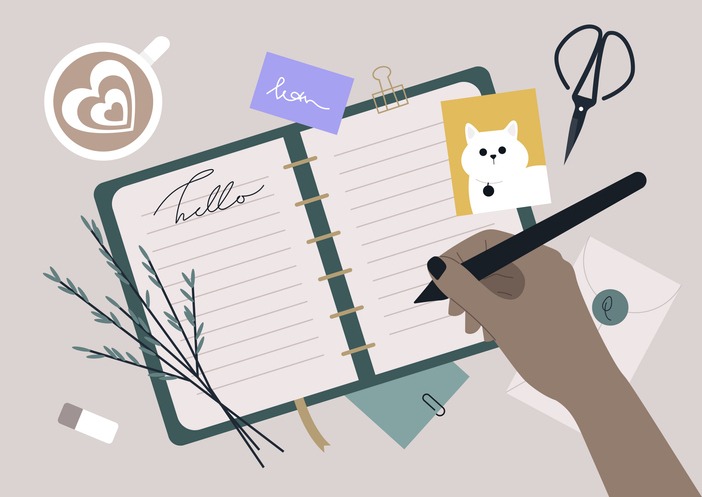
Journaling has exploded in popularity, and it’s not hard to see why – it’s a great way to gain insight to your problems, connect with yourself, and it can be a lot of fun, too as Rachel Garnet discusses
CREDIT: This is an edited version of an article that originally appeared on Psychologies
Journaling is the opportunity to express your inner thoughts and emotions, your creativity and your vibrancy.
No wonder then, that journaling is powerful for our mental, physical and future health; recording experiences now can be a vital tool for memory as we age.
Research, carried out by universities from Lancaster to Arizona, shows that journaling can help maintain heart health, increase immunity and reduce stress. It is a detox for the brain and soul; writing down thoughts imposes structure on them and literally gets them out of our heads.
How to start journaling for mental health
When you’re first learning how to start a journal, decide where and how you want to write.
Find a time when you are not distracted, and try to allocate at least 10 to 15 minutes for each session.
How to start a journal: 4 writing prompts
A word or an essay? It can be hard to know what to write when learning how to start journaling.
Writing prompts could include:
- What you are thinking now
- A concern you have
- The view from your window
- The best job you ever had
One of the key things to remember when learning how to start journaling is that you should go back and reflect.
Learning from your journal
A key point about journaling is remembering that self-criticism is unwarranted. Instead, self-compassion is needed.
This isn’t always easy. While what you write in your journal can be very insightful, it can be very easy to go around in circles as the lesson itself hasn’t been internalised.
As Garnet discusses, she uses a highlighter pen to show when she has those informative moments. It wasn’t until weeks after writing down a lovely compliment a mum from her youngest child’s school paid to her, that she allowed herself to take it on board.
How to start ‘free flow’ journaling
‘Free flowing’ journaling is where you journal exactly what comes into your mind at the time of writing. It enables your journal to become the exciting place it will end up being.
By writing more when you feel good, it’s also becoming vibrant. Garnet now writes about anything she wants to, from her son saying she was the best ‘squidgy piglet’ to the old lady at the supermarket checkout, who was so thrilled when she told her she loved her dress, that she made my day.
Journaling on-the-go
Garnet keeps her journal at home in the same place; always knowing where it is adds to its therapeutic feel. However, she has shopping receipts and envelopes inserted into it, with her open and honest thoughts that needed to be jotted down when she’s been out and about.
Recently, she’s begun to add some photos and pictures which have resonated with her, too. New aspects of journaling continue to open up.
Since learning how to start journaling, Garnet has admitted to becoming braver. It’s incredible what happens when you give rise to your inner dialogue.
She always wanted to spend time in South America, but her journal has highlighted just how strong this desire is. So with this in mind, she is starting an evening course to learn Spanish. When her children are adults, together with her husband, she is aiming to be the oldest backpacker in South America. And her journal will be coming with her.


Be the first to comment